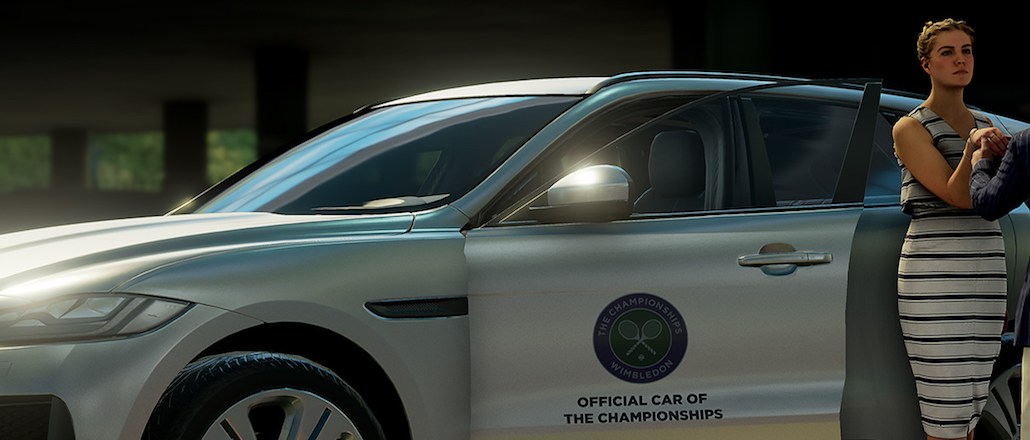
For some, virtual reality is a PR gimmick. For Jaguar, it’s a technology that is driving results.
At this year’s Wimbledon tournament, the brand created its first VR campaign, #FeelWimbledon, which let users experience hitting a winning shot as champion (and Jaguar ambassador) Andy Murray himself.
According to Robert Herd, head of communications at Jaguar Land Rover UK, the video has accumulated 97 million impressions since its launch in mid-June. The brand’s target was 50 million.
“Our competitors are about a rather cold cult of engineering. The reason #FeelWimbledon worked so well is that it’s very much about feeling, about emotion, about experience,” he said.
In the film, the viewer flies over the grounds of the All England Lawn Tennis Club — including several strategically placed F-Pace models — onto center court. After a close-up shot of Murray, the viewer is given his view as he delivers the winning point of the tournament to 14,000 fans.
It was made available online but also at physical locations too.
Travelers at London’s Waterloo station could also experience the film for the duration of the championships, while the brand handed out 20,000 Google Cardboard headsets.
Jaguar also delivered VR headsets to its 104 U.K. showrooms during the middle weekend of the tournament.
These stores have been home to VR technology since Jaguar Land Rover’s partnership with IBM in 2014, which saw it roll out virtual demo spaces where users wearing a Samsung Gear headset can customize their own model in real time. The brand also tested out the technology at the launch of its Discover Sport model. Boxes in its showroom were transformed into Discover Sport model cars when users looked at them through a headset. They could then view a demo of its features as they walked around.
“It allows us to demo vehicles earlier and earlier in the launch cycles. It’s an authentic way to experience the product,” Herd explained. This has pushed its pre-orders at a time when Jaguar is vying for place as a “challenger brand,” he added.
But VR isn’t cheap. The #FeelWimbledon campaign took three months’ work in partnership with agencies Spark44 and Hammerhead. Besides scanning Murray, the team also scanned cars and spectators for its 14,000-strong supporting cast.
Herd admits it was “a big old task,” but the ROI — like all its VR activity — has been proven in Jaguar’s growing market share. The company saw a 24 percent sales increase this year, which Herd says VR has played a large role in.
The company also uses virtual reality tech in its design process and has done so since 2007. This visual data has proved useful in its marketing efforts. Now, it can deliver hyper-realistic imagery before products have rolled off the factory floor.
The brand will continue to leverage the technology in its retailers, but it’s now looking to include VR as a bigger part of its online experience. While Herd couldn’t give specifics, he noted that the technology will be a “fundamental” part of its upcoming product launches.
“If you look at the opportunity for personalization, it’s interesting to see how consumer electronic companies will exploit what social media has exploited to provide personalized solutions for brand owners,” said Herd.
More in Marketing

With the rise of the chief AI officer, it’s time to examine ‘czar’ culture
Even if it’s a familiar pattern — hot new thing, new C-Suite exec to tackle said thing, a few years go by and that C-Suite position no longer exists as everyone is now doing said thing (or it was a fad that has since faded away) — does it make sense for businesses to continue to appoint new czars with every new trend?

Why Cava’s bid for brand awareness means prioritizing streaming ads
Fast-casual restaurant chain Cava has been in growth mode over the past year and is leaning into streaming ads in an effort to boost brand awareness.

A history of middle manager stress: The Return podcast, season 3, episode 1
In episode one, McKinsey partner Emily Field tells us more about why middle management is critically important to the workforce.





